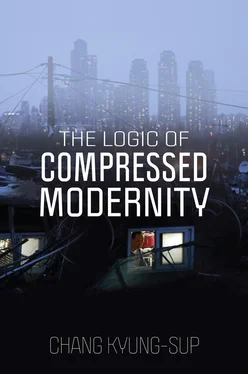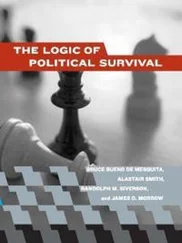In a stark contrast to the virtually intended inefficacy of conventional social sciences in analyzing South Korean realities, there are abundant cultural creations and productions that have most brilliantly captured and processed them into quite meaningful forms of aesthetic and intellectual experiences. In particular, many of South Korea’s films, television dramas, novels, and various performing arts have quite admirably articulated what its people and society have gone through in the endlessly turbulent but frequently spectacular moments of its modern history. Their skillful mastery of South Korea’s social realities and experiences often enjoys such praises from media and expert critics as would elicit strong jealousy from academic social scientists. 5After all, their social appeal has been proved globally – that is, not only in South Korea but also nearly across the world – in terms of show attendance sizes, television viewer rates, numbers of film seers, digits of webpage visitors, and magnitudes of SNS followers that may have been even unthinkable before. Such global popularity of South Korea’s cultural productions has necessitated a special term for symbolically denoting their Koreanness, namely, “the Korean wave” ( hallyu ). Given that most of the Korean wave productions substantively reflect South Korean realities and experiences, their global popularities attest to a sort of transnationalized (aesthetic) reflection on common or diverse conditions of human life and society in reference to the South Korean context. 6This trend was epitomized by the Oscar-awarded movie, Parasite , which masterfully narrates underclass South Koreans’ struggle in everyday realities of (what I analyze in this book as) compressed modernity and has thereby elicited fervent viewer reactions across the world.
On my part, since the early 1990s, I have tried to show what I holistically conceptualize and theorize as compressed modernity can help to construe, on the one hand, the extreme changes, rigidities, complexities, intensities, and imbalances in South Korean life and, on the other hand, analyze interrelationships among such traits and components. Fortunately, this line of effort has been significantly validated by the pluralist turn in international scholarship on modernity and coloniality (Eisenstadt 2000) and by many scholars’ constructive reactions to my work on compressed modernity in studying South Korea and other Asian societies in particular. The research topics and focus areas of such studies include: family relations and individualization in East Asia (e.g. Ochiai 2011; Lan, P. 2014, 2016; Hao, L. 2013; Jackson 2015); life world and life histories in Korean modernity (e.g. Yi et al. 2017); care system and social policy in East Asia (e.g. Shibata 2009, 2010; Ochiai 2014); sociopolitical structure of risk and disaster in South Korea (e.g. Suh and Kim, eds. 2017); all genres of “the Korean wave” (e.g. Martin-Jones 2007; Paik, P. 2012; Keblinska 2017; Lee, K. 2004; Abelmann 2003; Jang and Kim 2013; Regatieri 2017; Kim, H. 2018); Asian modernity and development in general (e.g. Kang, M. 2011; Yui 2012; Yi, J. 2015); and so forth. Most recently, some scholars both in China and overseas have analyzed post-Mao China as an instance of post-socialist compressed modernity (e.g. Wang, Z. 2015; Zhang, L. 2013; Xu and Wu 2016). 7
Many of these studies have utilized the concept of compressed modernity, despite its theoretical vagueness and substantive openness, as a heuristic theoretical and/or analytical tool for organizing and interpreting their empirical findings. Perhaps the utility of compressed modernity consists more in its broad intermediary function between researchers and realities than any theoretically specific explanatory function. For the reason explained just above, the theoretical and/or analytical adoption of compressed modernity in comparative cultural studies that attempt to decipher the Korean wave’s social substances and messages is quite an interesting development. Compressed modernity in South Korean realities and experiences may have been crucially perceived, whether consciously or unconsciously, by cultural producers as a heuristic clue to the main conditions and characteristics of contemporary South Korean society.
In my work on South Korean/East Asian compressed modernity, I have quite actively incorporated international scholarship on comparative modernities as broadly defined (to include postcolonialism and postmodernism). This is of course to draw critical insights from the world’s authoritative analysts and writers on the globally fundamental yet contentious issues of modernity and its various reconstructive and degenerative tendencies. At the same time, I have been keen to explore potential contributory possibilities in the global debates on comparative modernities on the basis of Korean/Asian experiences. These motivations have materialized into close discussions and collaborations with numerous distinct scholars on their key work as follows: Ulrich Beck (reflexive modernization and cosmopolitization), Göran Therborn (entangled modernities), Bryan S. Turner (citizenship as contributory rights), Hubert Knoblauch (refiguration), Emiko Ochiai (compressed demographic transitions in Asia), Laurence Roulleau-Berger (post-Western social sciences), Stevi Jackson (gender in East Asia), Nancy Abelmann (family and mobility in South Korea), Seung-Sook Moon (mobilizational citizenship in South Korea), Hagen Koo (class formation in South Korea), Chua Beng Huat (“pop culture” in Asia, the Korean wave), as well as many of South Korea’s key experts.
Critically building upon these earlier efforts, I intend to present a new book on compressed modernity, in which I present a more formalized explanation of compressed modernity in the South Korean and comparative contexts, and elucidate a special set of topics on South Korea’s compressed modernity as its essential systemic properties. More specifically, I hope to elaborate on the definitional and structural constitution of compressed modernity and discuss some of the most essential systemic properties of compressed modernity as manifested in the South Korean context. The primary purpose of the book is to provide a sort of soft treatise on compressed modernity as a generic category of modernity in the modern world history. On the other hand, various systemic properties of compressed modernity will be presented in analytical narrative built upon a wide range of empirical observations, both by myself and in literature. I hope the definitional and inclusive nature of the current book will be found useful by a wide range of international scholars interested or engaged in the issues of comparative modernities, social structure and change in South Korea/East Asia, citizenship of South Koreans/East Asians, Asian popular culture, Asians’ family life and personhood, comparative social policy and care system, and so forth.
1.2 Compressed Modernity in Critical Modernity Debates
Compressed modernity is a critical theory of postcolonial social change, aspiring to join and learn from the main self-critical intellectual reactions since the late twentieth century as to complex and murky social realities in the late modern world. Such intellectual reactions include postmodernism (Lyotard 1984, etc.), postcolonialism (Chakrabarty 2000; Ashcroft, Griffiths, and Tiffin 2002, etc.), reflexive modernization (Beck, Giddens, and Lash 1994, etc.), and multiple modernities (Eisenstadt 2000, etc.). Postmodernism forcefully argues that modernity has exhausted or abused its progressive potential, if any, only to spawn deleterious conditions and tendencies for humanity and its civilizational and ecological basis. Postcolonialism cogently reveals that postcolonial modernization and development have been far from a genuinely liberating process due to the chronic (re)manifestation of colonial and neocolonial patterns of social relations and cognitive practices in the supposedly liberated Third World. Reflexive modernization in late modern reality, as argued by Beck and Giddens, is a structurally complicated process of social change under the uncontrollable floods of choices that expose modern society and people to more risks than opportunities. The multiple modernities thesis emphasizes a comparative civilizational perspective that helps to recognize variegated possibilities and forms of modernities in the diverse historical and structural contexts for nation-making or national revival. As directly indicated or indirectly alluded to in various parts of this chapter, all of these critical debates on modernity have essential implications for the compressed modernity thesis.
Читать дальше












